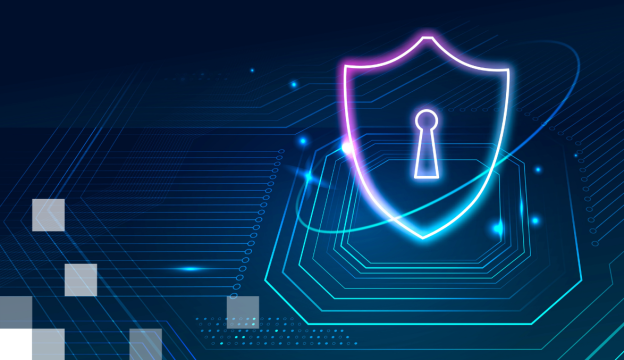CyberSec First Responder (CFR-410)
Mācību ietvaros iespējams apgūt tīkla aizsardzības un reaģēšanas metodes uz drošības incidentiem, taktiku un procedūras, kas ir saskaņotas ar nozares standartiem, piemēram, NIST 800-61r2 (Datordrošības incidentu apstrādes rokasgrāmata), US-CERT Nacionālā kiberincidentu reaģēšanas plāna (NCIRP) un prezidentālo politikas direktīvu (PPD)-41 par kiberincidentu koordināciju.
Mācības ir piemērotas tiem speciālistiem, kuri ir atbildīgi par drošības incidentu uzraudzību, to sistēmām un tīkliem.
Mācību mērķis
Zināšanu un prasmju pilnveide par rīkiem, taktikām un procedūrām efektīvākai kibedrošības risku pārvaldībai ar mērķi aizsargāt kiberdrošības aktīvus, identificēt dažādus izplatītākos draudus, novērtēt organizācijas drošību, apkopot un analizēt kiberdrošības izlūkošanas datus, kā arī savlaicīgi novērst un ziņot par incidentiem.
Mērķauditorija
- Kiberdrošības praktiķi;
- IT jomas speciālisti;
- Federālie līgumslēdzēji uzņēmumos un privātā sektora firmās, kuru misija vai stratēģiskie mērķi pieprasa aizsardzības nodrošināšanu kiberoperāciju (DCO) vai DoD informācijas tīkla (DoDIN) darbību un incidentu apstrādi.
Šīs mācības ir paredzētas to kompetenču attīstīšanai, kas nepieciešamas, lai nodrošinātu informācijas sistēmu aizsardzību kiberdrošības kontekstā.
Pēc mācībām tu spēsi
- Novērtēt kiberdrošības riskus organizācijā.
- Analizēt draudu ainavu.
- Analizēt dažādus izlūkošanas draudus skaitļošanas un tīkla vidēs.
- Analizēt dažādus uzbrukumus skaitļošanas un tīkla vidēs.
- Analizēt dažādas pēcuzbrukuma metodes.
- Novērtēt organizācijas drošību, veicot auditu un ievainojamības testēšanu.
- Iegūt un apkopot informāciju no tīkla un citiem informācijas avotiem par kiberdrošību.
- Analizēt žurnāla datus saistībā ar iespējamajiem draudiem un incidentiem.
- Veikt aktīvo līdzekļu un tīkla analīzi savlaicīgai incidentu atklāšanai.
- Reaģēt uz kiberdrošības incidentiem, izmantojot ierobežošanas, mazināšanas un atkopšanas taktiku.
- Izpētīt kiberdrošības incidentus, pielietojot dažādas analīzes metodes.
Priekšnoteikumi mācību apmeklēšanai
- Vēlama vismaz 2 gadu pieredze par datortīklu drošības tehnoloģijām.
- Izpratne par drošības ievainojamības atpazīšanu un draudus riska pārvaldību.
- Pamatprasmes darbā ar dažām skaitļošanas vidēm izplatītākajām operētājsistēmām.
- Pamatzināšanas par dažiem izplatītiem tīkla vides jēdzieniem, piemēram, maršrutēšanu un komutāciju.
- Izpratne par TCP/IP tīkla protokoliem, tostarp, TCP, IP, UDP, DNS, HTTP, ARP, ICMP un DHCP.
Mācību materiāli
CertNexus komplektā ir iekļauta visaptveroša darba burtnīca un citi mācībām nepieciešamie materiāli.
Sertifikācijas eksāmens
CFR-410, CyberSec First Responder: Threat Detection and Response sertifikācijas eksāmens (eksāmena kārtošana jau ir iekļauta kursa cenā).
Programma
Kibedrošības risku novērtējums
- Risku pārvaldības nozīmes noteikšana
- Risku tēmas novērtēšana
- Risku mazināšana
- Dokumentācijas integrēšana risku pārvaldībā.
Draudu ainavas analīze v
- Draudu klasifikācija
- Tendenču analizēšana drošības kontekstā.
Izlūkošanas draudu analīze skaitļošanas un tīkla vidēm
- Draudu modelēšanas ieviešana
- Izlūkošanas ietekmes novērtēšana
- Sociālās inženierijas ietekmes novērtēšana.
Uzbrukumu skaitļošana un analīze
- Sistēmas uzlaušanas uzbrukumu ietekme
- Tīmekļa uzbrukumu ietekmes novērtēšana
- Ļaunatūras ietekmes novērtēšana
- DoS incidentu ietekmes novērtēšana
- Draudu novērtēšana attiecībā uz mobilo drošību
- Draudu novērtēšana attiecībā uz mākoņdrošību.
Pēcuzbrukuma metožu analīze
- Vadības un kontroles metožu izvērtēšana
- Noturības metodes
- Datu eksfiltrācijas metodes
- Prettiesu ekspertīžu paņēmieni.
Organizācijas drošības stāvokļa novērtēšana
- Kiberdrošības audita ieviešana
- Ievainojamības plāna īstenošana
- Ievainojamības novērtēšana
- Caurlaidības pārbaudes veikšana.
Datu vākšana kibedrošības nolūkos
- Platformas izveide
- Datu vākšana no tīklā balstītiem informācijas avotiem
- Datu apkopošana no resursdatora informācijas avotiem.
Žurnāla datu analīze
- Populārākie rīki žurnālu datu analīzes veikšanai
- SIEM rīki.
Aktīvo līdzekļu un tīkla analīzes veikšana
- Incidentu analizēšana, izmantojot Windows rīkus
- Incidentu analizēšana, izmantojot Linux rīkus
- Kompromisu rādītāju analizēšana.
Reaģēšana uz kiberdrošības incidentiem
- Incidentu apstrādes arhitektūras ieviešana
- Incidentu mazināšana
- Informācijas nodošana uzraugošajām institūcijām saistībā ar kiberuzbrukumiem.
Kiberdrošības incidentu izmeklēšana
- Atbilstošā plāna izstrāde un ieviešana
- Pierādījumu vākšana un analizēšana
- Sekošana līdzi rezultātiem.
Ja vēlies uzzināt vairāk par šīm mācībām, sazinies ar mums pa tālruni 67505091 vai raksti e-pastu uz mrn@bda.lv.










